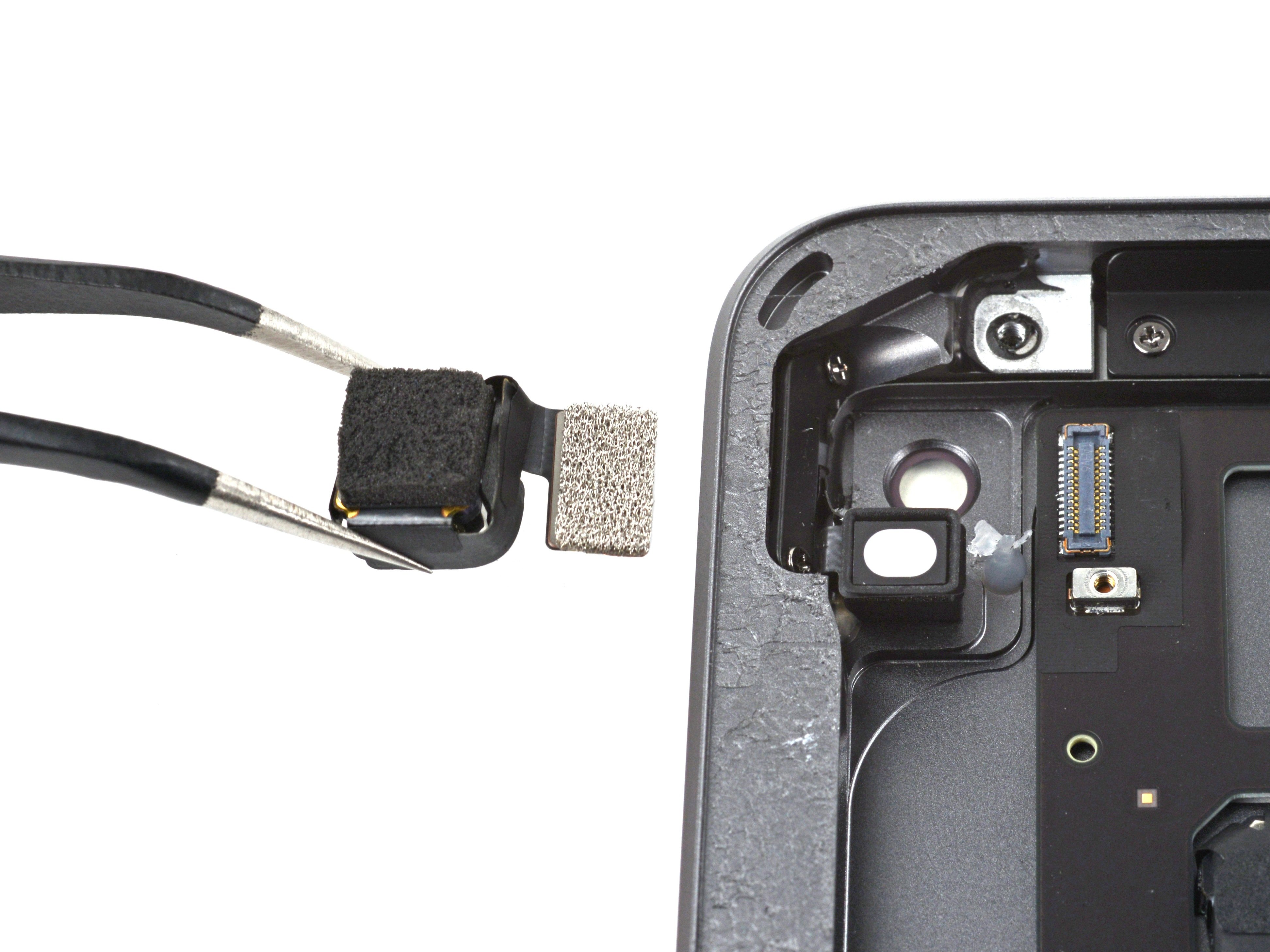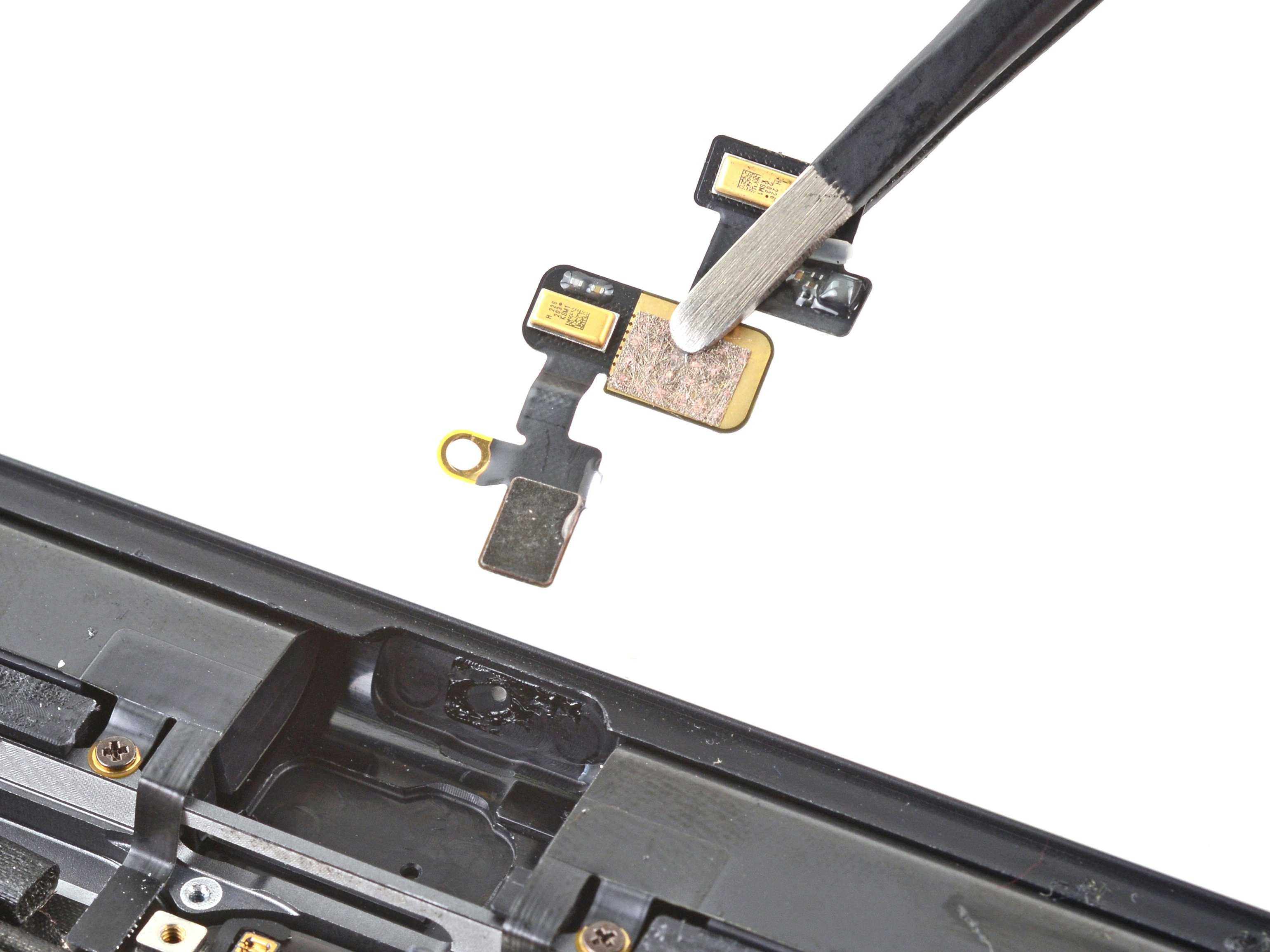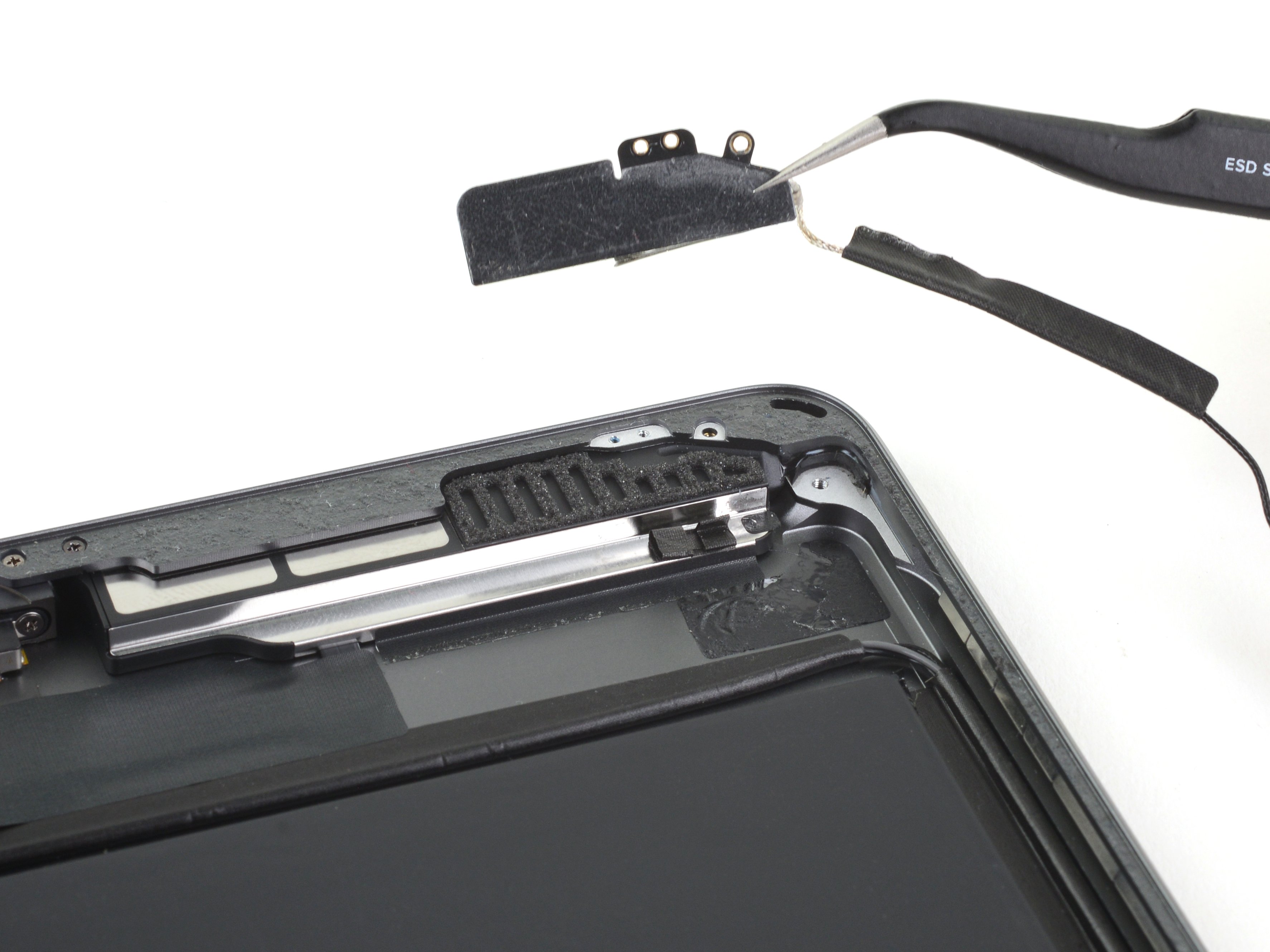How to Replace iPad 4G Home Button Assembly Guide
Duration: 45 minutes
Steps: 41 Steps
Heads up! Make sure to handle your device with care during the repair process. If you run into any bumps along the way, don’t hesitate to reach out for help. You can always schedule a repair with us!
Get ready to tackle the home button assembly replacement! Follow this guide to give your device the boost it needs. If you need help, you can always schedule a repair.
Step 1
Before diving into the repair, it’s a good idea to give your microwave a little TLC. Any stubborn mess on the bottom might just hitch a ride on your iOpener, and we don’t want that!
– Pop the iOpener right in the middle of the microwave like it’s the star of the show!
Tools Used
Step 2
Hey there! Just a quick heads up: be cautious not to overheat the iOpener during your repair adventure. If it gets too hot, it might just pop! Keep the heat below 100˚C (212˚F) for safety’s sake.
And remember, if the iOpener looks like it’s puffing up, steer clear of it. Safety first!
If the middle of the iOpener is still too toasty to handle, no worries! Just keep using it while you let it cool down a bit more before giving it another warm-up. A well-heated iOpener should stay cozy for about 10 minutes.
– Pop that iOpener in the microwave for a quick thirty-second heat-up.
– As you dive into the repair, keep an eye on the iOpener; if it starts to cool down, just give it another thirty seconds in the microwave to warm it back up.
Tools Used
Step 3
Watch out for the iOpener—it gets super toasty! Handle with care and grab an oven mitt if you need a little extra protection.
– Carefully take the iOpener out of the microwave, gripping one of the flat ends to steer clear of that hot center. You’ve got this!
Tools Used
Step 4
If you’re not rocking a microwave, no worries! Just heat up your iOpener in a pot of boiling water instead.
– Grab a pot or pan and fill it up with enough water to completely dunk your iOpener.
– Bring that water to a rolling boil and then turn off the heat. Safety first!
– Now, carefully drop your iOpener into the hot water for about 2-3 minutes. Make sure it’s swimming in there nice and cozy.
– Using some tongs, fish out the heated iOpener from its hot bath.
– Give it a good towel dry to make sure it’s all set.
– And voilà! Your iOpener is ready to rock! If you ever need to reheat it, just repeat the water boiling dance and let it soak for another 2-3 minutes.
Tools Used
Step 5
Don those safety glasses to keep your peepers protected, and remember to treat that LCD screen with care – it’s more delicate than it looks!
– Got a cracked display? No worries! Let’s keep that glass from shattering all over the place and protect yourself while we tackle this repair. Grab some tape and cover that glass up!
– Apply some overlapping strips of clear packing tape over the iPad’s display until it’s fully shielded. Think of it as a protective superhero cape for your device!
– Now, just follow the rest of the guide as best as you can. Keep in mind, once the glass starts to break, it might want to keep cracking a bit as you work. You might need to grab a metal prying tool to scoop the glass out. You’ve got this!
Step 6
Hey there! Just a friendly reminder, while you’re tackling this repair, you might encounter some broken glass. So, it’s a smart move to pop on some safety glasses to keep those pesky shards at bay. Stay safe and have fun with your repair!
– Place the iOpener flat against the right edge of your iPad, making sure it’s snug and cozy so it can really connect with the surface.
– Give it about 90 seconds to work its magic on the iPad before you dive into opening the front panel.
Tools Used
Step 7
Getting that wedged tip of the opening tool in between the glass and plastic might take a bit of muscle. Just take your time, and with a little patience, wiggle that plastic opening tool back and forth as needed. You’ve got this!
– Hey there! You’ll notice a tiny little gap in the iPad’s adhesive ring located in the upper right corner—about 2.0 inches (~5 cm) from the top. Let’s take advantage of this little flaw!
– Now, grab your trusty tool and line it up with the mute button. Carefully slide the tip of a plastic opening tool into that gap between the front glass and the plastic bezel. Just get the very tip in there to widen the crack a bit. You’ve got this!
Step 9
– With the plastic opening tool snugly positioned between the front glass and the plastic bezel, gently slide a plastic opening pick into that little gap right beside the tool. You’ve got this!
Step 10
– Gently take out the plastic opening tool from your iPad, and slide that opening pick in a little deeper, about half an inch under the front glass. You’re on the right track!
Step 12
The adhesive is super strong, so you might need to put in a bit of muscle. Just take your time and be careful!
If you can spot the tip of the opening pick peeking out from under the front glass, give it a gentle tug to pull it out just a tad. While using the pick this deep won’t cause any harm, it might leave some adhesive residue on the LCD, which isn’t ideal. Just a heads up!
– As the iOpener warms up the bottom edge, let’s start peeling away the adhesive from the right side of your iPad.
– Gently slide the opening pick down the edge of the iPad, freeing up that adhesive with each move.
Tools Used
Step 13
As you work on releasing the adhesive, keep in mind that you might need to reposition the heated iOpener back to the right edge of the iPad. This will depend on how long the iPad has had a chance to cool off while you were busy tinkering away.
– If your opening pick seems to be having a tough time with the adhesive, try giving it a gentle ‘roll’ along the side of the iPad. Keep at it, and you’ll be freeing that sticky stuff in no time!
Tools Used
Step 14
– Before you dive in and pop that first opening pick from the bottom corner of your iPad, slide a second pick underneath the right edge of the front glass. This little move will help prevent the adhesive from making a comeback!
– Give your iOpener a little reheat love, then place it on the top edge of the iPad. You’re doing great!
Tools Used
Step 15
The Wi-Fi antenna is snugly secured to the bottom right corner of the iPad’s rear case with screws and a cable. Since the Wi-Fi antenna’s positioning is a bit tricky, be sure to handle it with care to avoid any permanent damage. You’ve got this!
– Alright, friends, it’s time to tread carefully! We’re about to take on a delicate mission.
– You’ll need to gently detach the adhesive that’s holding the antenna to the front panel. Remember, we want to be extra careful not to harm those sensitive parts that connect the antenna to the bottom of the iPad. So, let’s follow these steps with precision and a smile!
Step 16
Hey there! Just a friendly reminder: don’t push that pick past the bottom right corner. You might accidentally give your Wi-Fi antenna a little too much love, and we wouldn’t want that!
– Gently glide that opening pick around the bottom right corner of your iPad to free up the adhesive. You’ve got this!
Step 17
Gently glide that opening pick along the bottom right edge of the front panel. Just a heads up—the Wi-Fi antenna is hanging out close to the corner, and if the adhesive gets a little wild, it could get severed. So, take it easy and be careful out there!
Just give that pick a little wiggle! Pull it out slightly so that about 1/8″ (3 mm) of the tip stays snugly under the front glass. You’ve got this!
– Gently glide the tip of the opening pick along the bottom edge of the iPad, and watch as the adhesive gives way over the Wi-Fi antenna. You’re doing great!
Step 18
– Alright, once you’ve navigated past the Wi-Fi antenna (about 3″ or 75 mm from the right edge, right by the home button), it’s time to reinsert that opening pick all the way in.
– Now, slide that pick to the right and let it work its magic to free the adhesive holding the Wi-Fi antenna to the front glass.
Step 19
Keep the iOpener’s heating sessions to a minute max, and remember to give it a breather for at least two minutes before warming it up again. You got this!
– Keep on gently peeling away the adhesive at the bottom of your iPad. Make sure to pull the opening pick out far enough to navigate around the home button. Once you’re past the home button, reinsert that pick to about 1/2 inch (10 mm) deep. You’re doing great!
Tools Used
Step 20
– Keep peeling away that adhesive all along the bottom edge of your iPad like a pro!
– Once you’re in, leave the opening pick snugly tucked under the front glass near the home button.
Step 22
If your adhesive is feeling a bit too cool, simply swap out the iOpener along the top edge and keep on going. If the iOpener itself has chilled out too much, just give it a little reheating love!
– Gently slide the opening pick along the top edge of the iPad, giving it a little tug to navigate around the front-facing camera bracket.
– The adhesive in this area is pretty tough, so you might need to apply some elbow grease. Take your time and be cautious to avoid any slips that could lead to mishaps with your iPad.
– If the opening pick feels like it’s stuck in the adhesive, try giving it a little ‘roll’ as demonstrated in step 9.
Tools Used
Step 23
If the adhesive is feeling cozy and warm, go ahead and set that iOpener aside for a bit. But if it’s still hanging on tight, give it another warm-up and place it on the left edge while you get to work. You’re doing great!
– Keep peeling away that adhesive at the top edge of your iPad, and gently maneuver the opening pick around the top left corner like a pro.
Tools Used
Step 24
The digitizer cable is hiding about 2 inches (50 mm) from the bottom of your iPad. Keep sliding the pick until you reach about 2.25 inches (60 mm) from the bottom. Easy peasy! If you need help, you can always schedule a repair.
– Gently slide the opening pick down the left edge of your iPad, letting that adhesive loosen up as you go. The adhesive is quite thin here thanks to the digitizer stretching along the entire left side. Just remember, keep the pick shallow—no deeper than 1/2 inch (10 mm)—to avoid any unintentional damage to the digitizer. You’ve got this!
Step 25
Be careful! The bottom of the digitizer cable is just about an inch (25 mm) from the bottom of the iPad. Take your time and work gently to avoid cutting this cable. You’ve got this!
– With the trusty opening pick still nestled under the bottom edge of your iPad, gently free the adhesive at the bottom left corner. You’ve got this!
Step 26
– Grab one of those handy opening picks and gently lift the bottom right corner of your iPad. Once it’s popped up, give it a little pinch with your fingers to hold it in place.
Step 27
Watch out for any sticky stuff that might still be hanging around! Grab an opening pick and gently slice through any adhesive that’s keeping that front panel snug as a bug.
– Grab your iPad by the top and bottom right corners and give that front glass a gentle twist away from the device—it’s like a little dance move!
– When putting everything back together, don’t forget to pamper that LCD! Use a microfiber cloth and a burst of compressed air to whisk away any dust bunnies or fingerprints before you seal the glass back on.
Step 28
– Carefully take out the four 2 mm Phillips #00 screws that are holding the LCD snugly against the aluminum frame. You’ve got this!
Step 29
– Grab your trusty plastic opening tool or a spudger and gently lift the right edge of the LCD out of the iPad. You’ve got this!
– Now, carefully rotate the LCD along its left edge and lay it down on the front panel. Easy peasy!
Tools Used
Step 30
– With the spudger’s tip in hand, gently lift the tape that’s hiding the LCD ribbon cable connector. You’ve got this!
Tools Used
Step 31
– Gently lift the retaining flap on the LCD ribbon cable ZIF connector. You’ve got this!
– With a little finesse from your fingers or some trusty tweezers, pull that LCD ribbon cable out of its cozy spot on the logic board.
– If the LCD screen is playing hard to get and refuses to turn on after reconnecting the ZIF connector, don’t sweat it! Just hold down the power button and home button together for at least ten seconds until you spot the Apple logo. You’re almost there!
Step 32
– Gently lift the LCD off the front panel, making sure to keep your hands clear of the screen. You’ve got this!
Step 33
– Grab your trusty spudger and gently lift the tape that’s holding the touchscreen ribbon cable snug against the logic board. You’ve got this!
Tools Used
Step 34
– Gently lift the retaining flap on both of the touchscreen ribbon cable ZIF connectors. You’ve got this!
Step 35
– Grab your trusty spudger and gently slide the flat end underneath the digitizer ribbon cable to loosen that pesky adhesive.
– Now, with a steady hand, pull the digitizer ribbon cable straight out from its cozy sockets on the logic board.
Tools Used
Step 36
– Gently lift the touchscreen ribbon cable and grab a spudger. Use its flat edge to carefully free the adhesive holding the cable to the back of the aluminum case. You’ve got this!
Tools Used
Step 37
– Gently wiggle and pull that touchscreen ribbon cable out of its cozy spot in the aluminum frame. It’s time for a little separation!
– Carefully detach the front panel from your iPad. You’re getting closer to the inner workings!
Step 38
The home button assembly is glued to the front panel, so it’s a bit of a sticky situation! To tackle this, we suggest using an iOpener to gently warm things up and make that adhesive a breeze to work with.
– Pop that iOpener into the microwave and give it a good thirty seconds on high power—let’s heat things up!
– Once it’s warmed up, gently place the iOpener right over the home button at the front edge of your display. You’ve got this!
Tools Used
Step 39
– Gently slide the plastic opening tool beneath the right side of the home button assembly and lift it up, freeing the adhesive on that side. If you need help, you can always schedule a repair.
Step 40
– Give that left side of the home button a gentle nudge to loosen the adhesive, just like peeling a sticker off your favorite notebook.
– Once that’s done, carefully lift the home button mount away from the front panel like you’re unveiling a hidden treasure.
Step 41
– Gently slide the edge of your trusty plastic opening tool under the home button mounting bracket.
– Carefully glide the tool along the retaining spring bracket to free up that stubborn adhesive.
– Once you’re all set, lift the home button along with its mounting bracket away from the front panel.




























































































